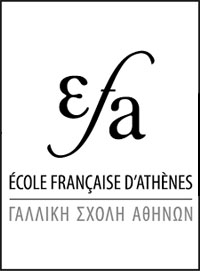FIGARETO - Kanoni - 2001
Informations Générales
Numéro de la notice
3239
Année de l'opération
2001
Chronologie
Antiquité - Archaïque - Classique - Hellénistique - Romain
Mots-clés
Nature de l'opération
Institution(s)
Toponyme
Notices et opérations liées
Description
Figareto, Kanoni. Konophaou B’ property. J. Provata (Η’ ΕΠΚΑ) reports that the third year of excavation exposed the two main buildings (4.2m apart), previously reported, plus related constructions.
Building A: the eastern boundary was defined, along with the extension of the south wall to the west (preserved to a length of 27.4m). The south wall was not a single construction: the eastern part, of pseudoisodomic masonry, preserved the threshold of a doorway: the western had similar masonry in the lower part, but in the upper, stone with tiles in a triangular arrangement (on the interior face, amphorae necks were set inside the triangles in a distinctively, probably local, arrangement). Four interior rooms were identified, plus four further walls likely from a later construction phase.
The south wall of Building B was exposed to a length of 33.15m, without tracing the east or west boundaries. Built in well-worked stone blocks of irregular size, terracotta plaques were built into the upper surface (perhaps to mark a doorway), and traces of white plaster preserved on the north face. One cross wall was identified, plus two further walls and piles of debris elsewhere in the excavated area. In the southwest corner of the plot was a tomb surrounded by a stone peribolos: this contained a double burial, with the two skeletons entwined in a supine position. The grave itself contained no goods, but 1.5m away, at the same depth, a large number of plain kalathiskoi and black-glaze and black-figure sherds on top of a layer of tiles.
Excavation to date has revealed evidence of activity from the Late Archaic/Classical to Roman periods, the majority of finds being Hellenistic. Notable finds include three stamped Rhodian amphora handles, and a round terracotta relief of fine quality. Forty bronze coins of Kerkyra have been found, mostly dating to the period 300-229 BC.
The east-west road which ran between the two buildings was covered by a thick destruction layer of stone, tile, and pottery (especially amphorae). The two buildings and the road likely formed part of larger complexes laid out on a grid plan. The discovery of two tiles stamped with the names of prytaneis may indicate that they were public buildings, although there are no clear indications of their function.
Auteur de la notice
Catherine MORGAN
Références bibliographiques
ADelt 56-59 (2001-2004) B5, 205-206.
Date de création
2013-06-14 00:00:00
Dernière modification
2023-10-11 14:39:09








